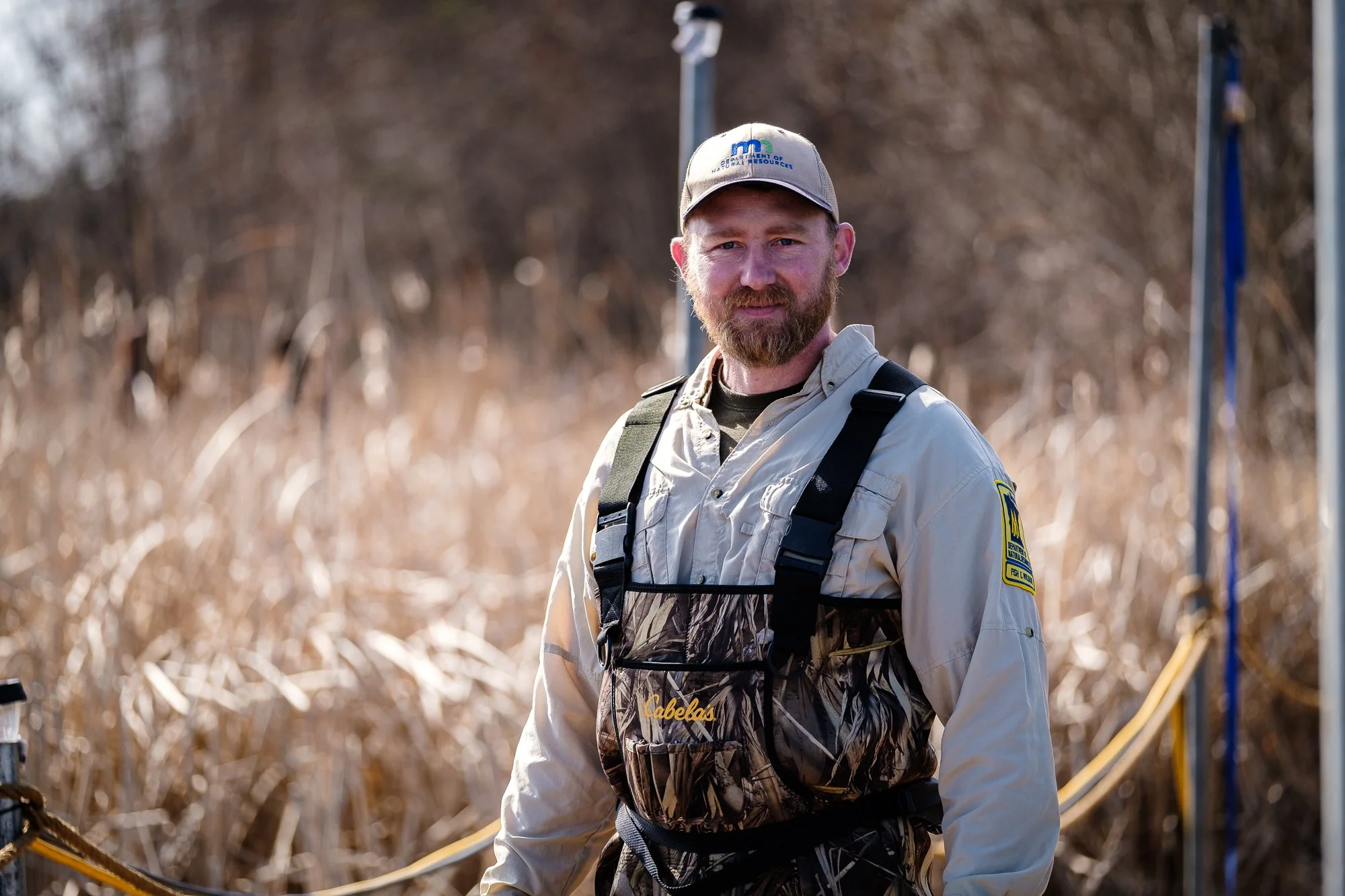Lake Winnie, Cutfoot Sioux Memorial Day Fishing Report May 25, 2025
Out are the cold and blustery conditions that tested our guests who fished with us last week. In, there are warmer air temperatures, sunshine and calmer breezes. Revealed are ultra-clear water, flighty walleyes and an increase in boat traffic on the lake.
Anglers fishing for walleyes on Lake Winnibigoshish May 23, 2025
On Friday, Jeff Sundin and his crew measured the water clarity on the big lake. They checked the deep breakline of the river channel, in front of Bowen Lodge, just outside of the gap from Cutfoot Sioux. The clarity, as measured on a Secchi disk was 22 feet deep. Conditions like that make fishing more complicated for sure, but despite the gin clear water, anglers are still catching walleyes.
Cold water temperatures, partially responsible for the clear water conditions ranged from 54 to 56 degrees on Friday. Mid-day temperatures remained cool again on Saturday, holding stubbornly in the 55-to-57-degree territory. As of this morning, Sunday May 25, 2025, cold overnight air temperatures have likely forced surface water lower again, we’ll begin hearing reports from guests about that later today.
Secchi Disk reading on Lake Winnie
Interestingly, the key depth ranges for locating walleyes remain relatively shallow when compared to past seasons. Most anglers are finding the best schools of fish in 10 to 16 feet of water, over soft bottom flats. The best areas feature a slower tapering breakline, rather than steep drop-offs, and the presence of newly emerging vegetation helps concentrate fish.
Deeper water breaklines, like the river channel, and areas where points or flats extend out to the lake’s main basin contain a handful of fish too. But are not prime areas at the moment. The water depths for fish found in these areas have ranged from 22 to 26 feet of water. Anglers have commented that when fishing these depths, more northern pike have been caught, than walleyes.
Dan Lentz, Kevin Mosier Lake Winnie Walleyes
The best presentation overall was jigs, 1/8 or ¼ ounce sizes, tipped with minnows. Because of their popularity with anglers, spottail shiners are used most often. That said, many are reporting good success using either rainbows, or large fatheads, when they can find them. At times, leeches suspended below slip floats have produced fish too, and anglers should be prepared to try both presentations.
Some folks have experimented with soft plastics, jigging lures and crankbaits. Except for folks fishing at night trolling with crankbaits, walleye production has been slow when using artificial lures. As water temperatures rise, the ratio of fish caught using alternatives like these will likely increase. For now though, be sure you have a good supply of live bait on hand.
Our guests, along with friends who fish the lake have discovered that in 2024 MN DNR fisheries assessments of the lake’s walleye population were right on. As reported, the 2019-year class of walleyes dominates the catch, and most of those fish have already entered the “protected slot” size range. Expect to catch a reasonable number of “keepers” from that year class that measure 17 to 17-1/2 inches. Expect also a high ratio of fish ranging between 18 to 18.5 inches, a handful of fish from the 2018-year class, now measuring 19 to 20 inches. Some of the better guides report catching about 1 “keeper” for every 2 protected fish that they release.
One helpful tip for raising the odds of catching smaller size fish is to target them during twilight periods. When fish are most active, like dawn and dusk, the ratio of larger fish typically decreases, and smaller fish become more aggressive. For the hearty, fishing at night tends to balance the ratio too. So if you don’t mind chilly fingers, fishing during the night may interest you as well.
Northern pike occur mostly as a bycatch of walleye angling right now. There are a lot of pike in the protected slot, albeit just barely. Measure carefully before you toss them in your livewell because there are lots of fish in the 22-to-23-inch size range right now. Folks haven’t targeted larger pike yet, that will occur later in the summer. That’s when we’ll learn more about the availability of larger size northern, and the best ways to catch them.
Yellow Perch action has been an on-again, off-again. Most of the perch coming in right now are caught by anglers fishing for walleyes. If you want to target them, look in shallow, back bays and flowages where there are bulrushes, or other standing vegetation. Use lighter jigs, 1-16- or 1-8-ounce weights, tipped with medium to large size fathead minnows.
Crappies have begun to explore shallow water, spawning territory. Some folks are finding them in patches of bulrushes, wherever light rock and gravel are mixed in. In some of the back bays, emerging lily pads growing in areas where a sand or marl bottom is covered with soft silt can also attract spawning crappies.
An alternative to fishing shallow water for crappies is to fish during the evening bite, from about 7:30 to 8:30 PM. Most folks anchor along deeper patches of vegetation, then fish using small jig tipped with live bait and suspended below slip bobbers. Key depths range from about 7 to 10 feet, wherever cabbage or coontail patches occur.
Sunfish have not moved into shallow water spawning habitat yet. Unless water tempertures increase fast, it’s liable to be a week, maybe longer before they do. We’ll be watching for water temperatures in the low 60 degree neighborhood before we get excited about exploring for panfish.
During the early season, boat ramps are packed, and the lines can get long. Remember, you’re invited to use the landing here at our marina. Whether you’ll be staying at Bowen Lodge or not, you’re welcome to join us here. The cost is affordable, and you get some perks, like the use of our fish cleaning station, and the availability of live bait, gas, and refreshments too. So, be sure to stop in whenever you’re in the neighborhood.





























